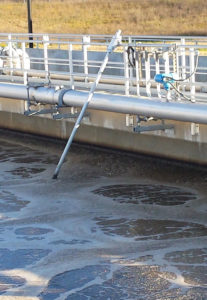Wastewater Aeration Systems
The biological process is the heart of the treatment system and the selection of an efficient aeration system is vital to operational success. As everybody is aware, the aeration process in a wastewater treatment facility consumes from 40-75% of a typical plants electrical energy/cost.
Energenecs personnel are very experienced working with Focus on Energy and other grant avenues to help Wisconsin and Illinois utilities obtain additional funding to assist in paying for the cost of significant aeration expansion or improvement projects.
Energenecs and international renowned fine bubble diffuser manufacturer EDI have collaborated to install no less than 100 aeration installations in the upper Midwest. These installations can range from small wastewater lagoon aeration projects using positive displacement blowers to large treatment facilities incorporating various BNR selector zones using high efficiency centrifugal or screw type blowers. No matter what the size of the plant, these aeration systems can yield tremendous energy improvement, not to mention excellent process results in the basins. Various blower technologies are deployed – from simple PD blowers to newer high-efficiency screw type blowers and large capacity centrifugal blowers.
Recent control system sensor technologies are bringing interesting wireless dissolved oxygen sensors into the aeration control equation for precise dissolved oxygen control and energy savings.
Other aeration process systems are available as well for applications such as equalization tanks, channel mixing, sludge holding tanks and aerobic digesters.
Properly sized fine bubble diffuser grids along with utilization of the proper blower technology that can be “turned” down in the winter months with sufficient air capacity in warmer weather while still ensuring basin mixing are critical considerations in system designs.
Our field technicians locally support wastewater treatment plant operators with ideas to improve their aeration process whether mechanical or electrical controls. Our staff of engineers, technicians and programmers can team up with consulting engineers and contractors to provide complete system responsibility for these aeration improvement projects.

Aeration basin with dissolved oxygen sensor and air header flow meter